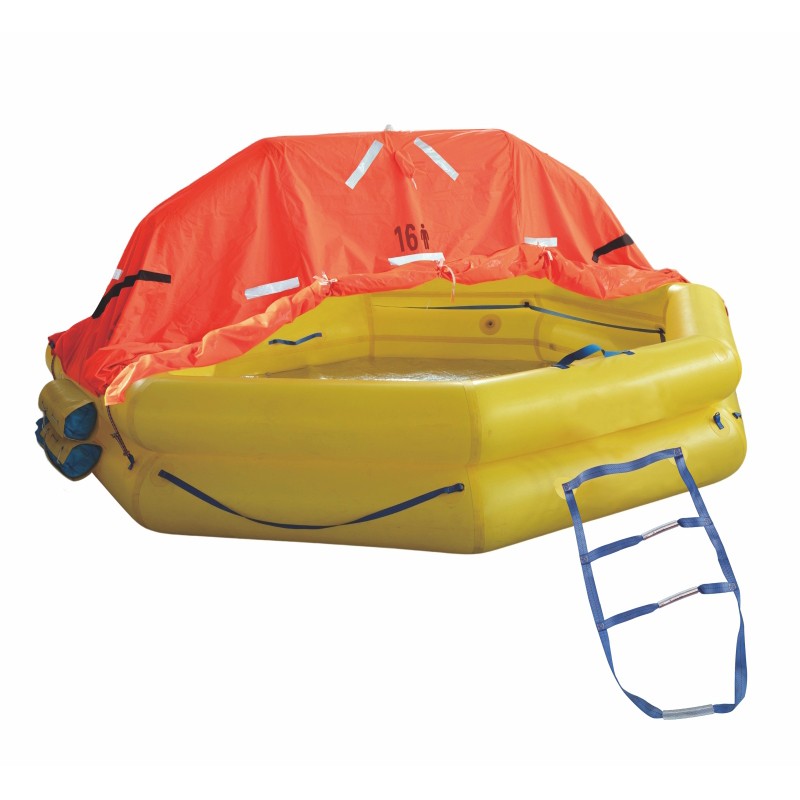Ensuring Safety at Sea: The Deployment Process of Throwing TPU Composite Adhesive Inflatable Life Rafts
2024-04-09
Introduction:
In maritime emergencies, the rapid deployment of life-saving equipment is crucial for ensuring the safety and survival of crew members and passengers. Throwing TPU Composite Adhesive Inflatable Life Rafts are designed to provide a reliable means of evacuation in such situations, boasting a streamlined deployment process that enables swift action when time is of the essence. In this blog, we'll delve into the deployment process of Throwing TPU Composite Adhesive Inflatable Life Rafts, outlining the steps involved and highlighting key considerations for effective deployment in emergency scenarios.
1. Activation:
The deployment process begins with the activation of the Throwing TPU Composite Adhesive Inflatable Life Raft. Located on the exterior of the life raft, typically near the top or side, is a clearly marked handle or lanyard that serves as the activation mechanism. In emergency situations, crew members or passengers can grasp the handle or pull the lanyard to initiate the deployment sequence.
2. Release of Gas:
Upon activation, the deployment mechanism triggers the release of compressed gas from onboard cylinders or CO2 cartridges housed within the life raft. This compressed gas serves as the inflation source for the life raft, rapidly filling the inflation chambers and buoyancy tubes with air. The gas release is controlled to ensure a controlled and controlled inflation process, preventing the life raft from inflating too quickly or uncontrollably.
3. Rapid Inflation:
As the compressed gas is released, the Throwing TPU Composite Adhesive Inflatable Life Raft begins to inflate rapidly, expanding to its full size and shape within seconds. The inflation process is designed to be quick and efficient, allowing the life raft to achieve maximum buoyancy and stability in the water as soon as possible after deployment.
4. Self-Righting and Stability:
As the life raft inflates, its design incorporates features that promote self-righting and stability in the water. Buoyancy tubes and inflatable compartments are strategically positioned to ensure that the life raft remains upright and stable, even in rough sea conditions. This self-righting capability is essential for ensuring the safety and comfort of occupants, minimizing the risk of capsizing or overturning.
5. Occupant Boarding:
Once fully inflated, the Throwing TPU Composite Adhesive Inflatable Life Raft is ready for occupants to board. Crew members or passengers can enter the life raft via designated boarding points, typically located along the sides or ends of the raft. Boarding should be conducted quickly and efficiently to minimize exposure to the elements and ensure the safety of all occupants.
6. Signal for Rescue:
Upon boarding the life raft, occupants should immediately activate signaling devices such as strobe lights, whistles, or distress beacons to alert nearby vessels or rescue teams to their presence. Proper signaling is essential for maximizing the chances of prompt rescue and ensuring the safety of all occupants until help arrives.
Conclusion:
In conclusion, the deployment process of Throwing TPU Composite Adhesive Inflatable Life Rafts is designed to be rapid, efficient, and straightforward, enabling swift evacuation and survival in emergency situations at sea. By following the activation sequence, releasing compressed gas, achieving rapid inflation, ensuring self-righting and stability, facilitating occupant boarding, and signaling for rescue, these life rafts provide a reliable means of escape and protection for crew members and passengers when faced with maritime emergencies. As a result, Throwing TPU Composite Adhesive Inflatable Life Rafts play a crucial role in safeguarding lives and ensuring safety at sea.



